Time zone CET (UTC+01) | Area 4 km² | |
 | ||
Weather 7°C, Wind W at 13 km/h, 83% Humidity | ||
The Calais Jungle was a refugee and migrant encampment in the vicinity of Calais, France. Many who lived in this camp attempted to illegally enter the United Kingdom via the Port of Calais or the Eurotunnel by stowing away on lorries, ferries, cars, or trains travelling to the UK. The camp gained global attention during the European refugee and migrant crisis when the population of the camp grew and French authorities carried out evictions. The French evacuated 6,400 migrants from the encampment in 170 buses, starting on 24 October 2016, with the intent of resettling the migrants in different regions of France.
Contents
- Location and conditions
- History
- Migrant population
- Facilities
- Migrant sites in France outside Calais
- Opposition
- References
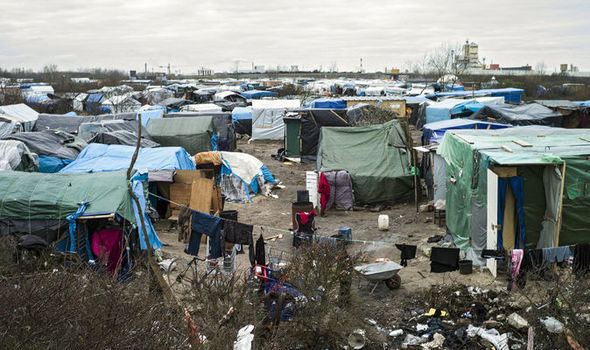
On 26 October 2016, French authorities announced that the camp had been cleared.
Location and conditions

There have been various "jungle" camps around Calais since 1999, where migrants set up camp on unoccupied land, moving to new locations when camps are closed down by the French authorities. At the same time other migrants squat in abandoned buildings. In April 2015, The Guardian reported that the "official" and principal "jungle" in Calais was located at a former landfill site, five kilometers (three miles) from the centre of town, and occupied by 1,000 of the 6,000 migrants in Calais. According to the paper, it was one of nine camps then existing in Calais. This jungle for the first time had showers, electricity and toilets, plus one hot meal served per day, but without proper accommodation.

Conditions in the other camps are poor, typically without proper sanitary or washing facilities and accommodation consisting of tents and improvised shelters. Food was supplied by charity kitchens. The French authorities have faced a dilemma of addressing humanitarian needs without attracting additional migrants.
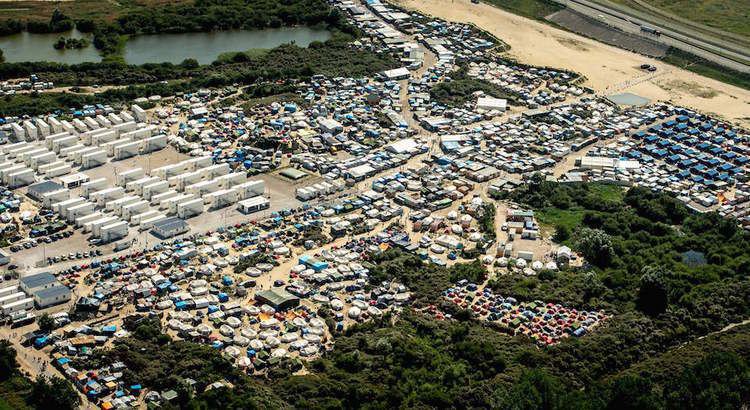
The jungle was located in a Seveso zone (regulated by Directive 82/501/EC). To solve this issue, government action was guided by the Treaty of Le Touquet of 4 February 2003, signed by former French president Nicolas Sarkozy, committing to halt illegal immigration to the UK via Calais.
History
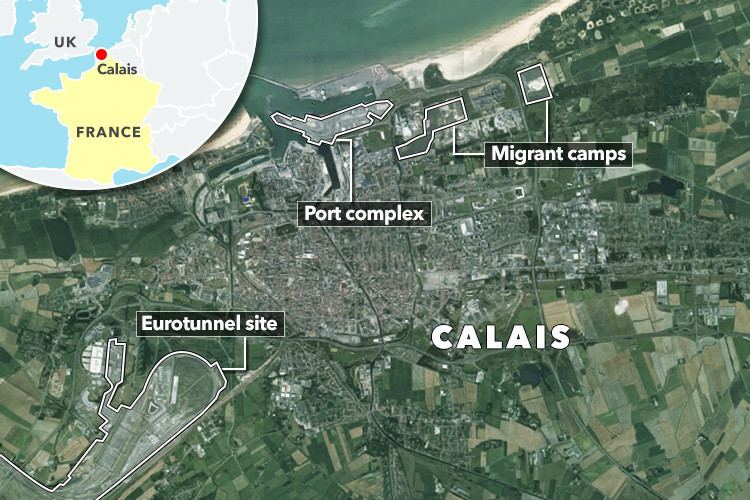
A reception facility named Sangatte, opened and administered by the French Red Cross, was founded near the Port of Calais in 1999 but rapidly became overcrowded. The original "jungle" was established in the woods around the Port after Sangatte was closed in November 2002 by Nicolas Sarkozy, then the French Minister of the Interior.

In an April 2009 raid on a migrant camp, the French authorities arrested 190 and used bulldozers to destroy tents, but by July 2009 a new camp had been established which the BBC estimated had 800 inhabitants. In a dawn raid in September 2009, the French authorities closed down a camp occupied by 700–800 migrants and detained 276 people.
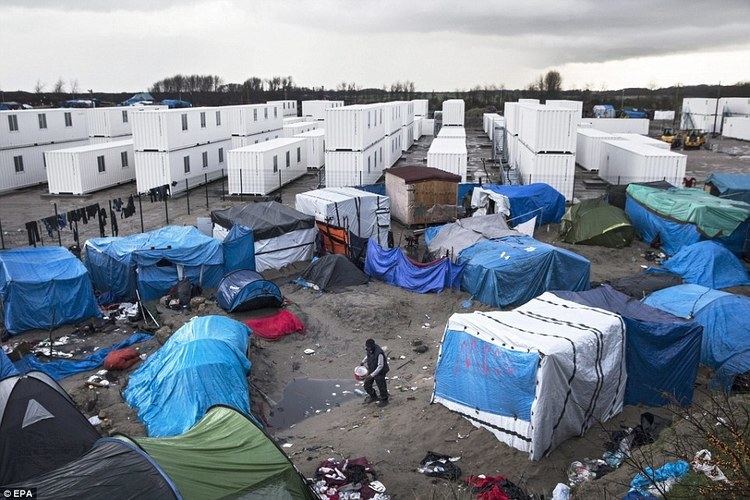
The mayor of Calais, Natacha Bouchart, threatened in September 2014 to block the port because, although it was an illegal action and would bring down upon her lawsuits and opprobrium, she thought it would send a "strong message" to the UK authorities. Also in September 2014, The Guardian estimated that there were 1,300 migrants in Calais, mostly from Eritrea, Somalia and Syria, and in July 2015, The Telegraph reported that the current jungle had 3,000 inhabitants. As of November 2015, there were an estimated 6,000 migrants living in the jungle. At the end of February 2016, the BBC noted: "[the] Total camp population is disputed - Calais officials say it houses 3,700, while Help Refugees puts it at 5,497".
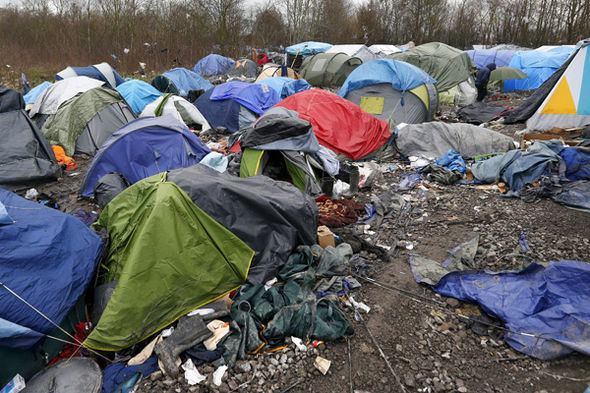
In January 2016, French authorities opened a shelter in the northeastern part of the camp. Authorities had earlier cleared tents and shacks from this area and erected 125 metal shipping containers in their place, converting the containers into shelters for up to 1,500 migrants. Shipping containers, rather than more permanent structures, were chosen because the sand dunes are unfit for permanent foundations. The container shelters were painted white and were furnished with bunk beds, windows, and heaters, but no running water or sanitary facilities (toilets and showers were made available at an existing nearby facility). At the time, Reuters described the "Jungle" as "squalid" and "unsanitary" and estimated its total population to be 4,000.
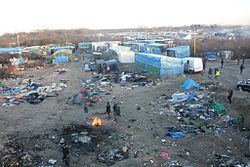
Many migrants subsequently moved into the container housing, but some resisted the French's government ultimatum to leave the Jungle and go to the container area, citing the area's spartan setup, lack of communal areas, and fears that once in the new housing area, they will be blocked from going to Britain.
On 25 February 2016, the French government received approval from a court in Lille to evict 1,000 migrants from the camp; the group Help Refugees estimated that 3,455 refugees were living in the eviction area. During the evictions the southern side of the camp was demolished. There was some resistance; riot police used tear gas and stones were thrown. At least 12 huts were set on fire.
In March 2016, French Minister of the Economy Emmanuel Macron warned that should the UK vote leave the EU in June 2016, the juxtaposed controls arrangements that allow British immigration officials to operate in Calais might be threatened, and that as a consequence the Calais jungle might transfer to Britain.
In February 2016, a petition by charities to stop a planned demolition of the southern half of the "Jungle" camp was rejected by a French court. In early March 2016, workers under heavy police guard began to demolish shacks in the encampment; police clashed with migrants and British activists of the "No Borders" group, who set fire to structures. Three "No Borders" members and one migrant were arrested. As of March 2016, local authorities estimate the population of the camp at 3,700 (of whom about 800 to 1,000 would be affected by the eviction); aid groups put the number higher, saying that according to a census conducted by them, there were "at least 3,450 people in the southern part alone, including 300 unaccompanied children."
In late May 2016, a "massive brawl" with unclear causes broke out at the "Jungle" encampment, resulting in 40 injuries (33 migrants, 5 aid workers, and 2 police officers), of which 3 were serious (including a stabbing). Two hundred police officers, seventy firefighters, and eleven ambulances responded to the scene; French authorities opened an investigation. At the time, Deutsche Welle estimated that 4,000 to 5,000 people lived in the camp. As of October 2016, Help Refugees put the number at 8,143.
In September 2016, workers began building a barrier, dubbed "The Great Wall Of Calais", to block refugees from accessing a highway where they could stow away on vehicles bound for Britain.
On 26 October 2016 the prefect of Pas-de-Calais, Fabienne Buccio, announced that the camp had been cleared. About 6,000 migrants were bused to temporary reception centers, while many others relocated to a camp in Grande-Synthe or to informal settlements near the ports of northern France. Aid groups reported that thousands of former Calais residents moved to the streets of Paris.
Migrant population
According to a July 2016 census by Help Refugees, the camp was populated by 7,307 migrants - the highest number to date. Of those, 761 were minors according to the census. The population of the camp grew by 50 people a day on average. It has been stated that the population had surged to nearly 10,000 after the Brexit vote on 23 June 2016.
Sixty two percent of the migrants in Calais are young men with an average age of 33 and of non-European origin. The mix of nationalities has changed over time, with Kurdish Iraqis being the largest group initially, but by 2014 a growing number of people were also from the Horn of Africa and Sudan. Many of the Kurdish Iraqis later moved to similar camps near Calais and Dunkirk.
Most of the refugees do not speak French, and are attempting to enter the British labour market to work illegally rather than claim asylum in France, although the number claiming asylum has risen since the procedures were revised in 2014.
Many migrants have paid smugglers to get them to Calais: one migrant from Egypt, a politics graduate, told The Guardian that he "paid $3,000 to leave Egypt, risked my life on a boat to Italy spending days at sea" and that in one month he had tried 20 times to reach England; another, an Eritrean woman with a one-year-old child, had paid £1,825 – and her husband the same – to sail to Italy, but her husband had drowned during the journey. Migrants risk their lives when they try to climb aboard or travel on lorries, occasionally falling off and breaking bones; some fatalities en route are also recorded. The camps themselves are also dangerous, particularly for women, with a volatile mix of desperate young men of different nationalities, drinking, and violence.
Facilities
The juxtaposition of the shanty town and the developed world was stark: according to Médecins Sans Frontières there was some access to water including some showers (sometimes after up to six hours queuing), some food was distributed, and heat was available during cold weather, but sanitation was poor and there were issues of water quality.
Care services were offered by Médecins du Monde and Médecins Sans Frontières and, according to UK charity Human Relief Foundation, the migrant population was generally healthy.
Among the Non-Government Organizations providing refugee relief was Care4Calais, founded by Clare Moseley of the U.K.
Educational services have been provided to the refugees by Jungle Books, by the Ecole Laique du chemins des dunes and by Edlumino. Some quasi-legal enterprises exist but substance abuse and petty crime was widespread.
Migrant sites in France outside Calais
Other smaller, migrant sites exist in France outside Calais; the charity Association Terre d'Errance (Wandering Earth Association) estimates that eleven camps exist in the northern part of the country. The largest of these is the Grande-Synthe site near Dunkirk. On that site, migrants (most Iraqi Kurdish families) lived under deplorable conditions on a boggy wasteland site, without adequate sanitation facilities or shelter; the site was cited as being worse than Calais. In March 2016, as demolition work was taking place at the "Jungle" site in Calais, a Grande-Synthe site—"France's first ever refugee camp to meet international humanitarian standards"—was under construction, with 200 of 375 projected cabins already built by Medecins Sans Frontieres. A total capacity of 2,500 people is expected. Traffickers sexually abuse migrants both women and children by raping them in exchange for blankets, food or opportunity to evade to the UK.
Other than Calais and Grande-Synthe, encampments were reported to exist in 2015 in Paris, Dieppe, Boulogne and Le Havre.
Opposition
The growth of the refugee settlement has occurred at the same time as a rise in the popularity of right-wing French groups like the National Front, terrorist attacks in France by radical Jihadists, the Great Recession and the European migration crisis. Local protests by both pro and anti-immigration groups have taken place in Calais and physical and verbal attacks against residents of the camp and persons thought to be residents of the camp have been regularly reported. Buildings at the camp have also been subjected to arson attacks. Local shop owners have also allegedly discriminated against persons based on their perceived race by forbidding these persons from shopping at their shops.
